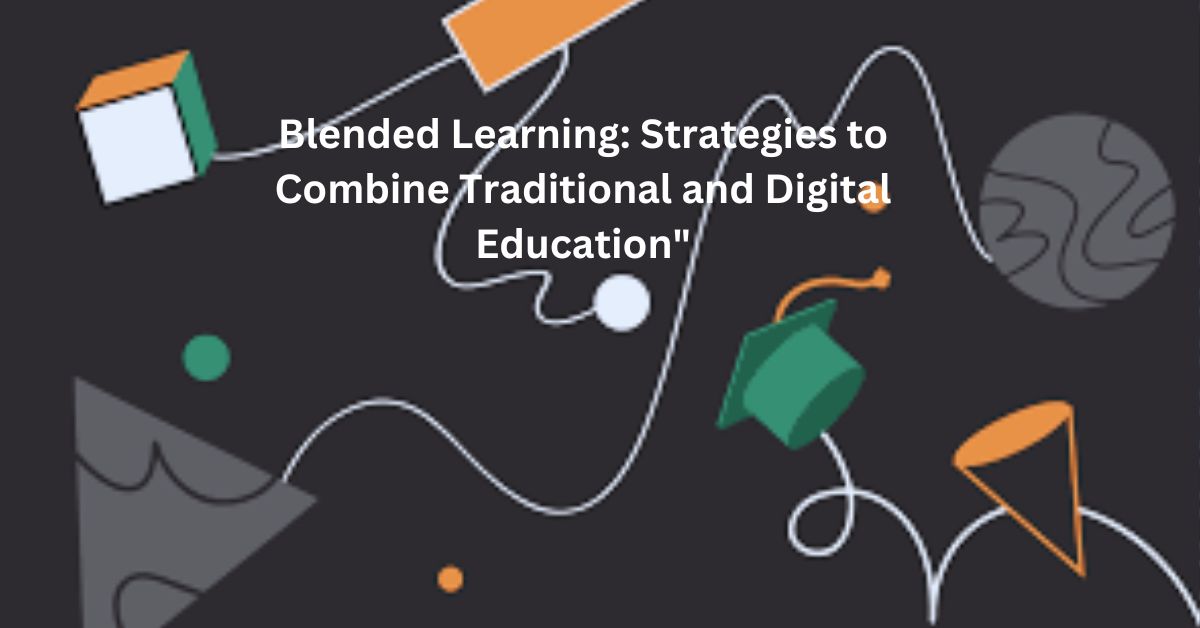Blended learning is revolutionizing the education landscape by seamlessly integrating traditional classroom teaching with digital learning methods. This approach not only enhances student engagement but also improves learning outcomes. In this article, we will explore effective strategies for implementing blended learning and maximizing its benefits.
What is Blended Learning?
Blended learning is an educational approach that combines face-to-face classroom instruction with online learning. It allows students to learn at their own pace while still benefiting from direct teacher interaction. This hybrid model provides flexibility and ensures a well-rounded educational experience.
Benefits of Blended Learning
- Personalized Learning – Students can access learning materials anytime, catering to their individual learning styles and speeds.
- Increased Engagement – The combination of multimedia tools, interactive content, and classroom discussions keeps students motivated.
- Enhanced Collaboration – Digital platforms enable students to interact with peers and teachers beyond the classroom.
- Improved Learning Outcomes – The ability to revisit online content and engage in self-paced learning boosts comprehension and retention.
- Flexibility for Educators – Teachers can utilize digital tools to track student progress and provide targeted support.
Effective Strategies for Blended Learning
1. Flipped Classroom Approach
In a flipped classroom, students study new concepts online before attending in-person sessions. Classroom time is then dedicated to discussions, problem-solving, and collaborative activities. This approach encourages active learning and deepens understanding.
2. Use of Learning Management Systems (LMS)
Platforms like Moodle, Google Classroom, and Blackboard facilitate content sharing, assignments, and assessments. An LMS helps organize course materials, making learning more structured and accessible.
3. Incorporating Interactive Multimedia
Videos, simulations, podcasts, and gamified learning tools can make lessons more engaging. These digital resources cater to different learning preferences and enhance comprehension.
4. Synchronous and Asynchronous Learning Balance
Synchronous learning includes real-time online sessions, webinars, and virtual discussions. Asynchronous learning involves recorded lectures, e-books, and self-paced modules. Combining both ensures flexibility and maximizes learning efficiency.
5. Data-Driven Personalization
Using analytics from digital tools, educators can monitor student progress and customize instruction accordingly. This helps in addressing learning gaps and providing timely interventions.
6. Collaborative Learning Techniques
Encouraging group projects, discussion forums, and peer reviews in digital platforms fosters teamwork and critical thinking. Tools like Zoom, Microsoft Teams, and Padlet can enhance collaborative learning experiences.
7. Regular Assessments and Feedback
Online quizzes, polls, and real-time feedback mechanisms help track progress and reinforce learning. Continuous assessments guide educators in refining their teaching strategies.
Challenges and Solutions in Blended Learning
1. Digital Divide
Not all students have equal access to technology. Schools should provide digital resources and ensure inclusivity in blended learning.
2. Teacher Training and Adaptation
Educators need proper training to integrate technology effectively. Regular professional development programs can bridge this gap.
3. Student Motivation and Discipline
Self-paced learning requires discipline. Gamification, rewards, and interactive content can keep students engaged.
Conclusion
Blended learning offers a dynamic and effective educational approach by merging traditional and digital methods. When implemented strategically, it enhances student engagement, improves learning outcomes, and prepares learners for a tech-driven future. By leveraging the right tools and techniques, educators can create a more interactive and personalized learning experience.
